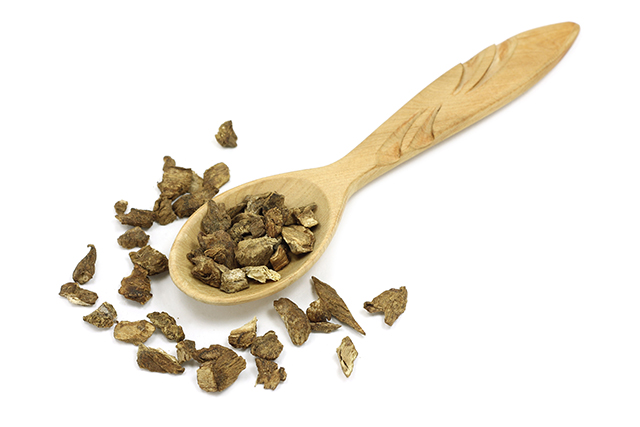Mushrooms as medicine? Review looks at health benefits of supplements, nutraceuticals derived from fungus
05/10/2019 / By Evangelyn Rodriguez

Mushrooms may be considered by some as vegetables when added to a dish, but in reality, they are not. They are fungi that have been shown to possess medicinal benefits. This is widely known and appreciated by many people, hence the considerable number of studies about mushrooms and the active compounds they contain. Researchers from Nanjing Agricultural University in China decided to make a list of the important components found in mushrooms and their medicinal properties. Their review, which compiled the latest information about the health benefits and functional mechanisms of mushroom nutraceuticals, was published in Food Science and Human Wellness.
The health benefits of mushrooms
Several studies highlight the potential of mushrooms to attenuate health hazards caused by obesity, hypolipidemia (decrease in plasma lipoprotein), hypotension (low blood pressure), hypertension (high blood pressure), and aging. Here is a list of the bioactive pharmaceuticals present in mushrooms and what they do:
Polysaccharides. Polysaccharides in mushrooms have immunomodulatory and anti-inflammatory activities. Immunomodulators are chemicals that influence the response or function of the immune system. These polysaccharides work by activating cytokines (signaling molecules) and immune cells like dendritic cells, monocytes, neutrophils, natural killer cells, and macrophages.
They also regulate gut microbiota and gastrointestinal function by serving as energy sources for specific bacterial groups that produce short-chain fatty acids (SCFAs) like acetate, propionate, butyrate, and valeric acid. These SCFAs are involved in controlling appetite in animals and humans.
Lectins, fungal immunomodulatory proteins (FIPs) and ribosome-inactivating proteins (RIPs). Lectins are glycoproteins found in mushroom. They bind to carbohydrates present on the surface of cells and have immunomodulatory, antitumor, antiviral, antibacterial and antifungal properties.
FIPs, on the other hand, have the potential to be adjuvants to cancer treatments because they suppress the invasion and metastasis of tumor cells. RIPs are enzymes that inactivate ribosomes, the sites where RNAs are translated into proteins. These enzymes are useful in treating viral, fungal, and microbial infections due to their ability to stop these invaders from proliferating.
Terpenes. Terpenes are bioactive metabolites whose benefits include antioxidant, antiviral, and antimalarial activities. They also display cytotoxicity against some tumor cell lines, namely, HepG2 (human liver), HeLa (immortal cell line), and KB (keratin-forming tumor). Terpenes isolated from Pleurotus cornucopiae also have anti-inflammatory activity.
Terpenese like methyl ganoderate A acetonide and n-butyl ganoderate H isolated from the species Ganoderma lucidum have anti-acetylcholinesterase activity and pharmaceutical companies have developed potential drugs for treating Alzheimer’s disease and other neurodegenerative diseases based on them.
Phenolic compounds. Phenolic compounds found in mushrooms include phenolic acids, flavonoids, lignans, tannins, and oxidized polyphenols. These compounds, like their counterparts in plants, have antioxidant activity. They also decompose peroxide, inactivate metals, and scavenge oxygen.
Phenolic compounds provide protection against brain dysfunction, aging, and cardiovascular diseases by scavenging free radicals and reactive oxygen species. They also have anti-inflammatory, antimicrobial, anticancer, and antiviral activities. (Related: Mushrooms may be another great way to get your vitamin D.)
Polyunsaturated fatty acids. These fatty acids are the most common lipids in mushrooms. They have the ability to reduce serum cholesterol and prevent cardiovascular disease. In addition, ergosterol, a major sterol (amphipathic lipid) found in mushrooms, possesses significant antioxidant activity.
Tocopherols, another type of polyunsaturated fatty acids, are also potent antioxidants that protect against degenerative diseases, microbial infections, and heart disease. Linoleic acid, on the other hand, has anti-inflammatory activity and can decrease the risk of Alzheimer’s disease.
Based on the evidence they’ve gathered, the authors concluded that mushrooms should be added to a person’s diet, either in supplement form or as food, because of their many active components and medicinal properties.
FoodCures.news has more information about functional mushrooms and other foods that contain disease-fighting nutrients.
Sources include:
Tagged Under: alternative medicine, anti-inflammatory, anticancer, antifungal, antimicrobial, antioxidants, antiviral, brain health, cardiovascular disease, cognitive health, Diets, disease treatments, edible fungi, food cures, food is medicine, food science, functional food, heart health, immune system, lectins, Mushrooms, natural cures, natural medicine, nutrition, polysaccharides, polyunsaturated fatty acids, prevention, research, supplements, terpenes
RECENT NEWS & ARTICLES
COPYRIGHT © 2017 BRAIN NEWS


















